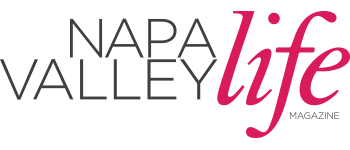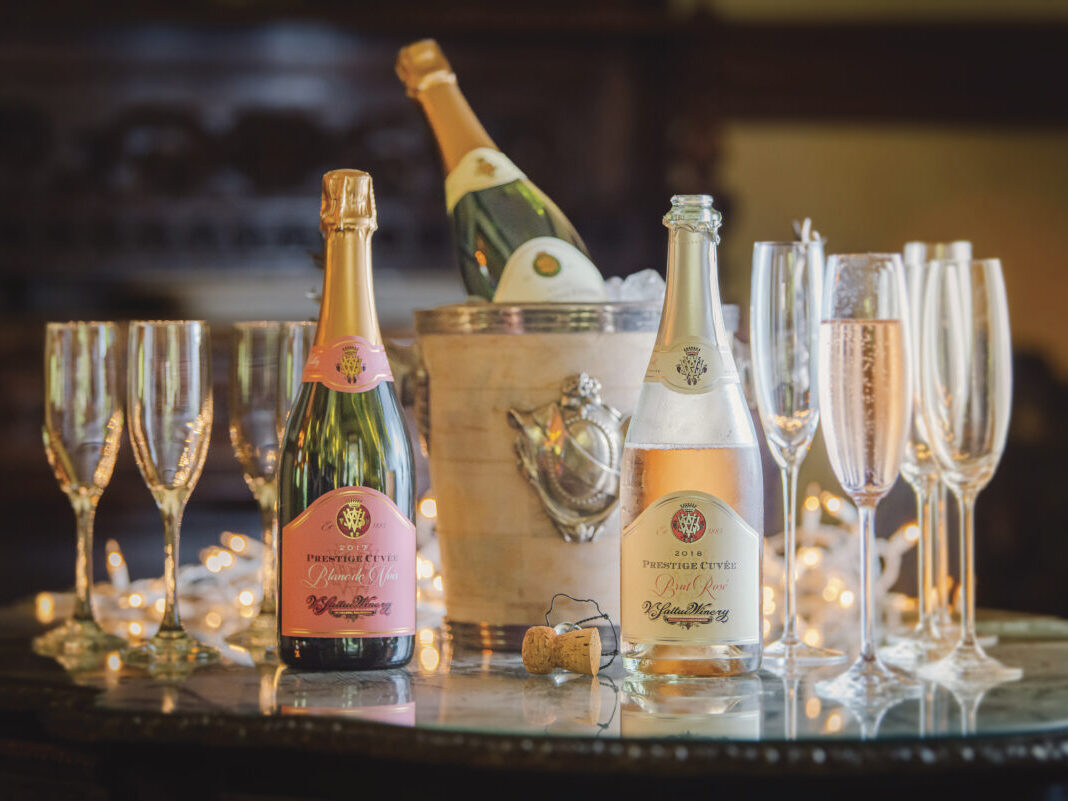There’s nothing more celebratory than hearing a cork pop from a bottle of bubbles – even if not celebrating anything in particular, the bottle’s opening is a marking in itself. That’s what’s so special about sparkling wine; it’s a cornerstone of social events and momentous occasions, especially around the holidays.
Not all sparkling wines are crafted the same, though; there are six main methods of creating this style of wine that vary from producer to region, of which the most recognizable are those protected by designation of origin regulations (Champagne in France; Prosecco in Veneto, Italy; Cava in Penedès, Spain).
Champagne’s eponymous sparkling wine is produced with Chardonnay, Pinot Noir, and Pinot Meunier. They use the traditional method, or méthode Champenoise, where the second fermentation – which adds the effervescence – occurs inside the bottle. Cava is produced using the same method, however, the dominant grapes used for the wine are Parellada, Macabeo, and Xarel-lo. Prosecco, produced with the principal Glera grape, relies on the tank method, where the base wine, sugar, and yeast are all added to an oversized vat, where the second fermentation occurs before the wine is filtered and bottled. The rest of the methods are less mainstream but include the transfer, ancestral, continuous methods, and carbonation.
There are also varying categories of sparkling wine, which is determined by the wine’s dosage; the sugar and wine mixture is added as the last step to top off the bottles from liquid lost during the second fermentation. From the driest to the sweetest, there’s Extra Brut (0 to 6 grams of sugar per liter), Brut Nature, Brut, Extra-Dry, Sec, Demi-Sec, and Doux (more than 50 grams of sugar per liter).
In Napa Valley, most sparkling wines mirror the bubbles from Champagne – we have the same primary grapes, and the traditional method is preferred here. The most popular region for growing grapes used in sparkling wine is southerly Carneros, where “cool maritime conditions allow longer hang time and greater acid retention in the fruit before harvest,” explains Hugh Davies, vintner at Schramsberg Vineyards, the oldest sparkling wine house in Napa Valley.
Over the years, Carneros’ desirable climate has steadily attracted reputable Maisons from France’s Champagne region, including Domaine Chandon (established in 1973 by Moët and Chandon) and Domaine Carneros (of the noble family behind Taittinger Champagne) in 1987, the latter of which hosts their 138-acre winery here. There’s also a bounty of small batch and family-owned bubbly brands that produce sparkling wine in Carneros and beyond that are worth seeking out – find out more below.
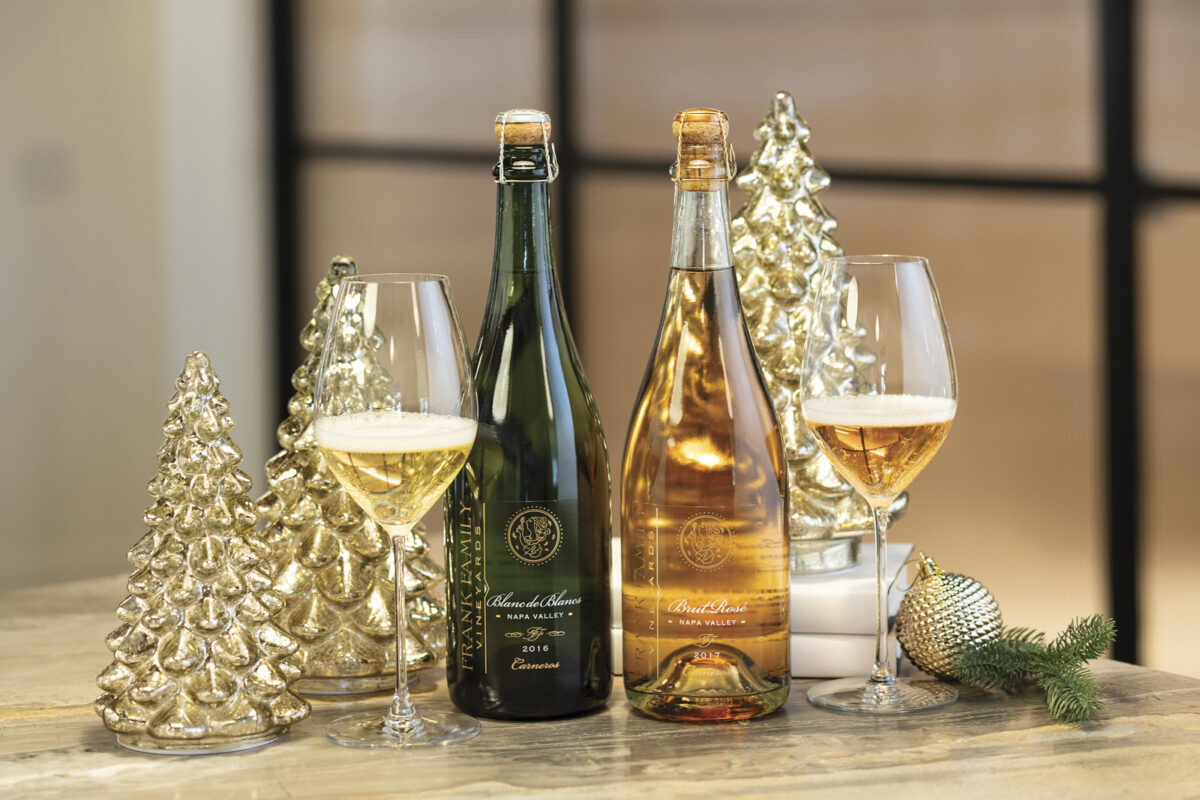
Photo courtesy of Frank Family Vineyards
FRANK FAMILY VINEYARDS
Sparkling wine has been a significant part of Frank Family Vineyards since its founding in 1993. As they celebrate 30 years in the Valley, Frank Family’s newest releases (2016 Frank Family Vineyards Blanc de Blancs and 2017 Frank Family Vineyards Brut Rosé) portray the winery’s “grower-producer” five-year process that includes a minimum of three years on the lees before disgorgement. “I started making sparkling wine in the Napa Valley in the 1990s and have been working with Frank Family Vineyards’ Lewis Vineyard in Carneros since I joined the winery in 2003,” shared Todd Graff, General Manager and Winemaker at Frank Family Vineyards. “After 20 harvests with this site, I truly believe that some of the finest sparkling wines in the world are crafted from the cool-climate Chardonnay and Pinot Noir grown in Carneros.” The vineyard spans ten different vineyard blocks of varying elevations and microclimates, of which the shallow and dense clay loam soils result in low yields of grapes with balanced freshness and structure. Graff produces all Frank Family Vineyards’ sparklers in méthode champenoise style. // www.frankfamilyvineyards.com
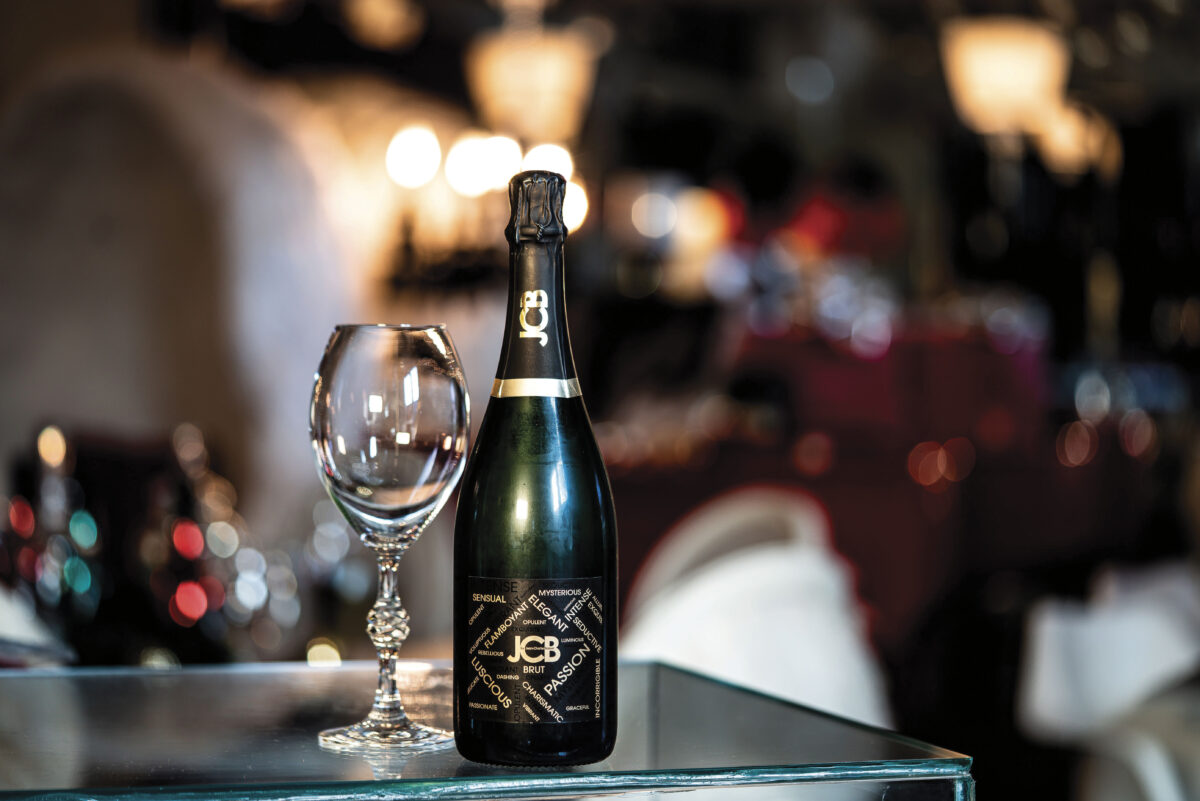
Photo courtesy of JCB Collection
JCB COLLECTION
Proprietor Jean-Charles Boisset began his wine journey in the village of Vougeot in Burgundy, France. “The very birthplace of Pinot Noir and Chardonnay [that] ignited my lifelong dedication to wine,” said Boisset. To fuse the essence of his Burgundian heritage with the pioneering spirit of California, Boisset not only imports French wine but also crafts several sparkling wines in the Valley, including N˚0, N˚9, Passion Late Disgorged, and The Surrealist Sparkling. “In Napa Valley, the great diversity of terroir brings exceptional bubbles – where we can marry richness with the pure acidity of Carneros and Jameson Canyon to create extremely distinctive sparkling wine unlike anywhere else.” Try the 2019 Surrealist Sparkling (48 percent Pinot Noir, 52 percent Chardonnay) for a sip of classic JCB harmony – white flowers and minerality on the nose meet red berries and crisp citrus on the palate. // www.boissetcollection.com
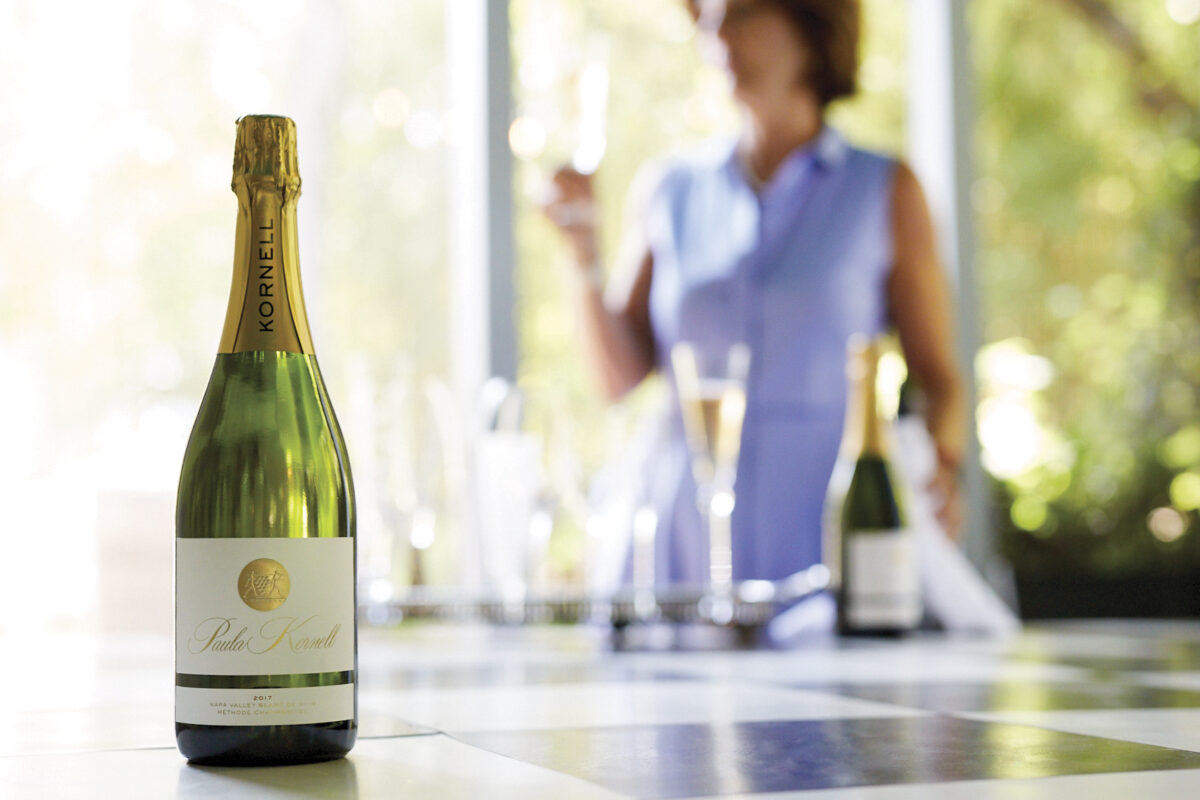
Photo courtesy of Paula Kornell
PAULA KORNELL
As a fourth-generation sparkling wine producer, Paula Kornell is committed to producing Champagne-style wines in the Valley. Perhaps the best showing of this is the winery’s Napa Valley Blanc de Noirs, created with Pinot Noir and Chardonnay grapes grown at Mitsuko’s Vineyard in Carneros. “Mitsuko’s Vineyard is a magical place, named for Mitsuko Shrem, the co-founder of Clos Pegase Winery and a friend of Paula’s mother,” explained Robin Akhurst, sparkling winemaker at Paula Kornell. “Its proximity to the San Pablo Bay allows us to make wines with great acidity, balance, and backbone. The unique soils of the Carneros region give the complexity and intensity of our wines, making them feel alive and vibrant. It’s not the easiest region to farm, but it produces the best grapes for great sparkling wine.” Disgorged in January 2023, the 2020 Blanc de Noirs is 70 percent Pinot Noir and 30 percent Chardonnay, offering a crisp palate with notes of lemon, white peach, and a honeyed brioche finish. The winery also produces a California Brut, a Blanc de Blancs from Carneros Chardonnay (2023 first release), and a California Brut Rosé is lined up for 2024. // www.paulakornell.com
V. SATTUI WINERY
For a brut rosé currently on the market – and awarded as best in show at various international wine competitions, including Monterey – V. Sattui Winery presents their 2018 Prestige Cuvée Brut Rosé. Dry but bright with a crisp and refreshing palate of orange blossom and green apple finish, this sparkler is produced with grapes from V. Sattui’s estate vineyards along the North Coast (84 percent Pinot Noir, 16 percent Chardonnay). “Napa Valley has the Pacific Maritime microclimates, soils, and varieties that make our sparkling wines very distinctive,” said Brooks Painter, director of winemaking at V. Sattui Winery. The family-owned winery offers a dedicated tasting of their fizzy portfolio at their weekend Bubble Bar (Friday, Saturday, and Sunday from 10 a.m. to 4 p.m. for $50). This one-hour tasting includes a sampling of Dry Prestige Cuvée Brut, Prestige Cuvée Brut Rosé, Blanc de Noir, and the cult-followed Angelica. // www.vsattui.com
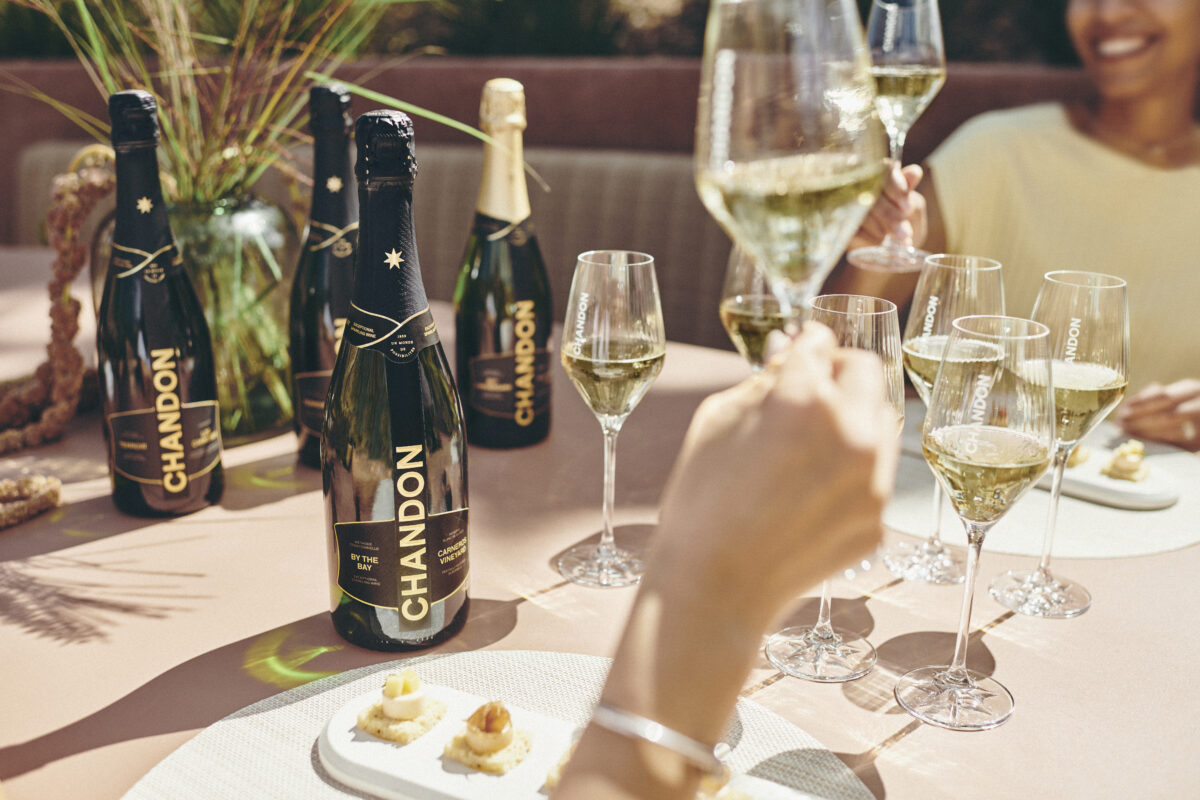
Photo courtesy of CHANDON
CHANDON
There’s a saying in the wine world: “What grows together, goes together,” and this couldn’t be truer for Chandon’s By The Bay Reserve Blanc de Blancs. Though Chandon produces more than 25 sparkling varieties – including niche experimentals like Pinot Meunier and Garden Tea that are only available for onsite tasting at their new winery – this label is the winery’s ode to Chardonnay, paying special tribute to their Carneros terroir. The maritime-influenced climate produces vibrant and balanced grapes for a bright, mineral-forward sparkling wine that pairs expertly with briny oysters. This particular wine ages 3.5 years and is brightened with about 8 percent Pinot Blanc. // www.chandon.com
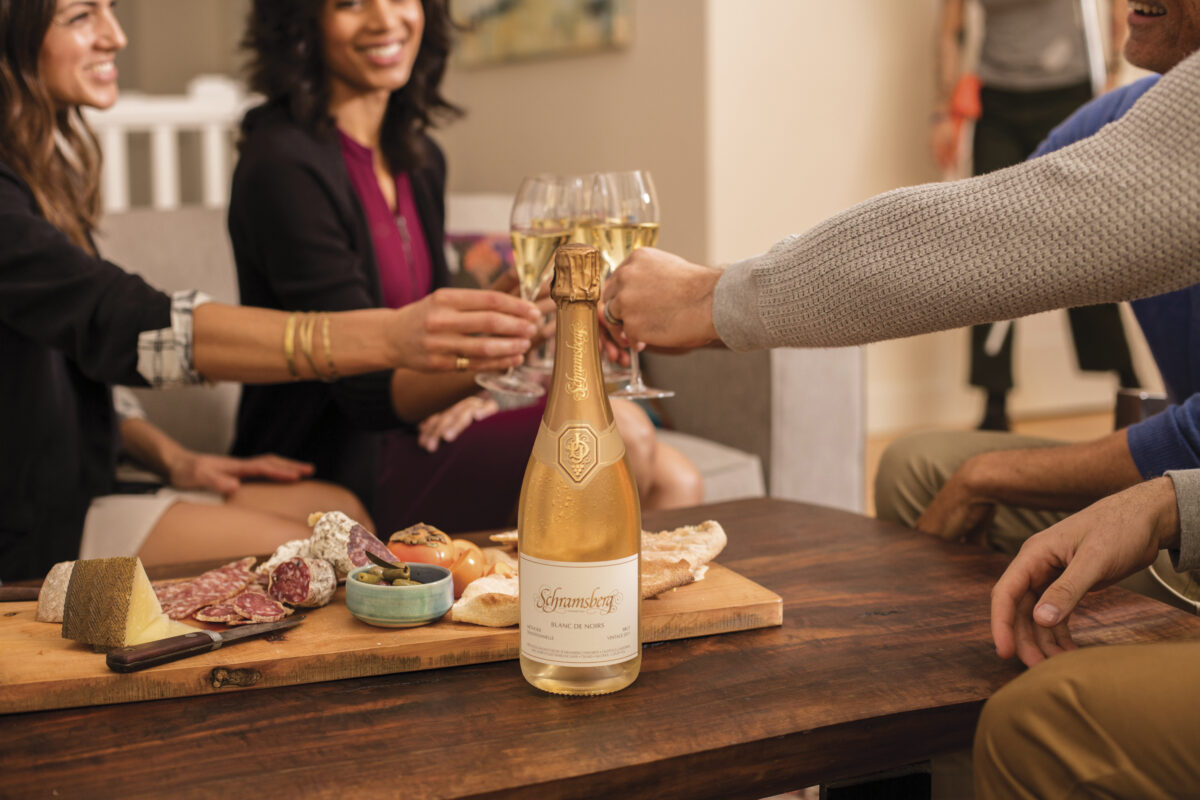
Photo courtesy of Schramsberg
SCHRAMSBERG VINEYARDS
On its 59th vintage, Schramsberg has earned its place in the Valley. Though they continue to craft their classics, like Blanc de Blancs and Schram Blancs, they are not afraid of evolution. “We started with Chardonnay and Pinot Noir vineyards in the north part of the Napa Valley back in the 1960s,” shared Davies, “but there has been a gradual shift to the southern end of the valley where cool maritime conditions allow longer hang time and greater acid retention in the fruit before harvest [Carneros].” They now produce between 12 to 14 different sparkling wines each year, and while this selection ensures there’s something for everyone, for something truly unique, try the 2019 Crémant demi-sec, an off-dry sparkling wine made with 55 percent Flora, 26 percent Chardonnay and 19 percent Pinot Noir. The bouquet of lemon zest, pear, and candied apple is spiced up with ginger and pound cake before a bright yet buttery palate that is a delectable complement to holiday desserts like apple pie and crème brûlée – or opt for a savory pairing of spicy Asian foods.
